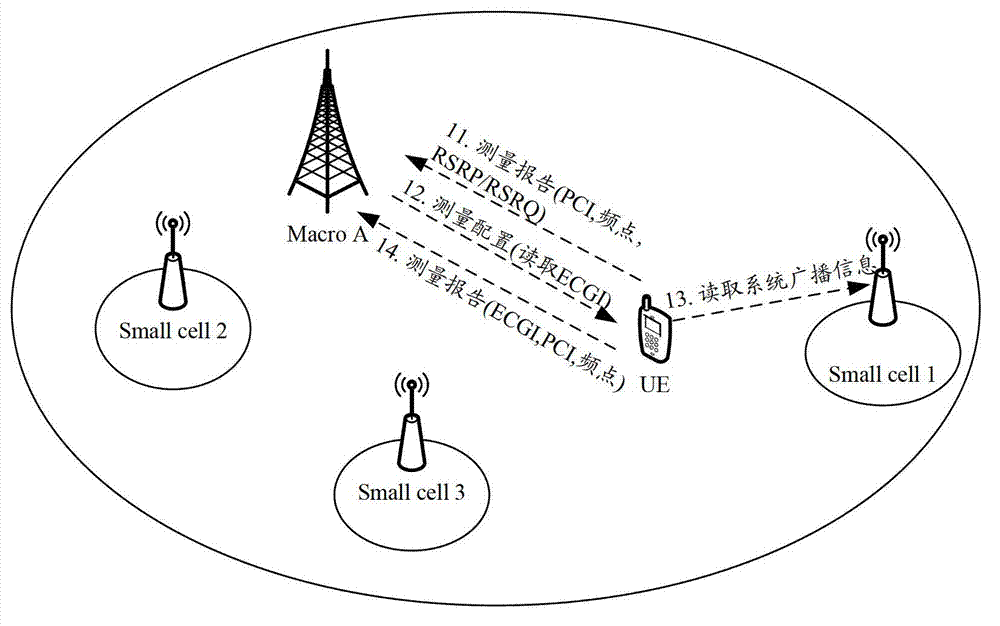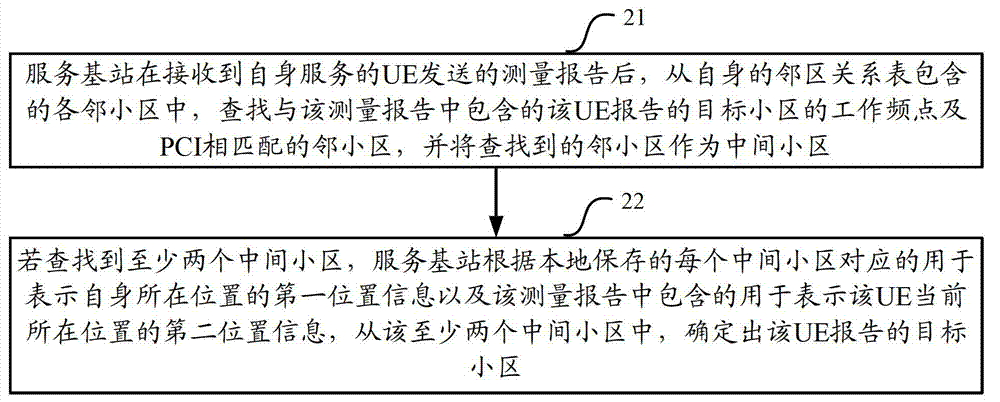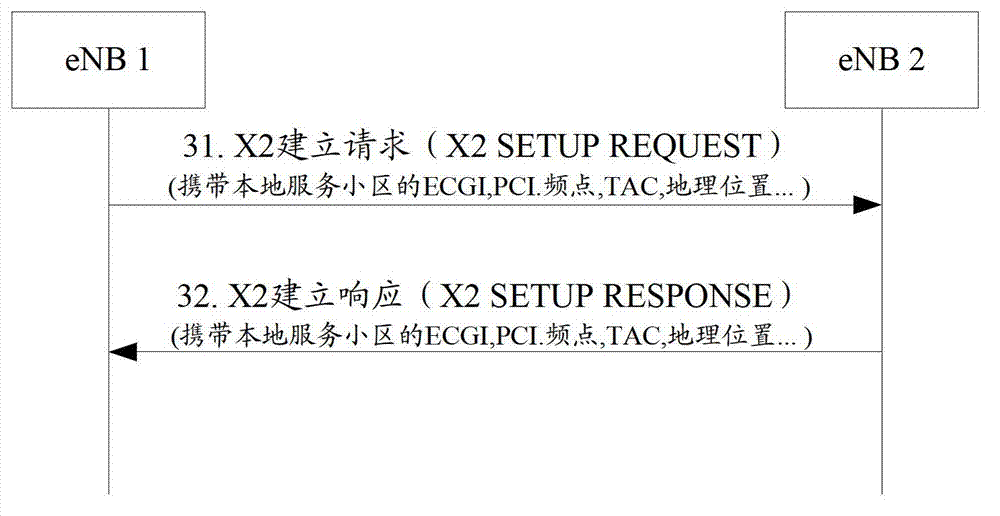Target cell determining method and device
A target cell and cell technology, applied in the field of communication, can solve the problems of increasing handover preparation delay, reducing user experience, call drop, etc., and achieve the effects of reducing handover preparation delay, improving user experience, and improving handover performance
- Summary
- Abstract
- Description
- Claims
- Application Information
AI Technical Summary
Problems solved by technology
Method used
Image
Examples
Embodiment 1
[0093] Embodiment 1. Assuming that 5 small cells are deployed within the coverage of macro cell A (macro cell A), namely small cell1~small cell5, see for network topology Figure 5 As shown, small cell 1 and small cell 3 have the same operating frequency and PCI, and the PCIs of other small cells are different. In this embodiment, each base station adopts Method 1 to obtain the first location information of each cell controlled by itself, and the second location information is the longitude and latitude information of the location of the UE; for the process of determining the target cell by the macro base station provided in this embodiment, see Image 6 As shown, including the following steps:
[0094] Step 61: The macro base station A obtains the first location information of each cell controlled by itself, and the small base station obtains the first location information of each cell controlled by itself;
[0095] Specifically, the operator configures the first location informati...
Embodiment 2
[0112] Example 2. Still using Figure 5 The network topology shown is an example. This embodiment is similar to Embodiment 1, but the difference is: In this embodiment, macro base station A adopts method 1 to obtain the first location information of each cell controlled by itself, and is similar to that of macro base station A. Adjacent small base stations adopt mode 2 to obtain the first location information of each cell controlled by themselves;
[0113] Specifically, when the operator deploys the macro base station A (that is, the base station where the macro cell A is located), the first location information of the macro cell A is configured; each small base station obtains the information of the small cell controlled by itself through its own positioning device. The first location information.
Embodiment 3
[0114] Example 3. Still using Figure 5 The network topology shown is an example. In this embodiment, the small eNB1 has established an interface connection with the macro base station A (such as the X2 interface), and then the small cell1 serving cell of the small eNB1 changes its configuration information (such as PCI and changes The latter PCI is exactly the same as the PCI of small cell3); for the process of determining the target cell by the macro base station in this embodiment, see Figure 7 As shown, including the following steps:
[0115] Step 71: The small eNB1 sends an interface signaling message to the macro base station A, and the interface signaling message carries the updated configuration information of the small cell1;
[0116] Wherein, the configuration information includes configuration parameters (the configuration parameters include operating frequency and PCI, ECGI, TAC, etc.) and first location information;
[0117] Step 72: After receiving the interface signal...
PUM
 Login to View More
Login to View More Abstract
Description
Claims
Application Information
 Login to View More
Login to View More - R&D
- Intellectual Property
- Life Sciences
- Materials
- Tech Scout
- Unparalleled Data Quality
- Higher Quality Content
- 60% Fewer Hallucinations
Browse by: Latest US Patents, China's latest patents, Technical Efficacy Thesaurus, Application Domain, Technology Topic, Popular Technical Reports.
© 2025 PatSnap. All rights reserved.Legal|Privacy policy|Modern Slavery Act Transparency Statement|Sitemap|About US| Contact US: help@patsnap.com



